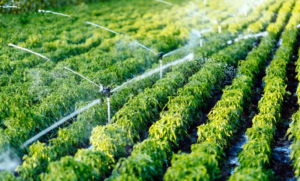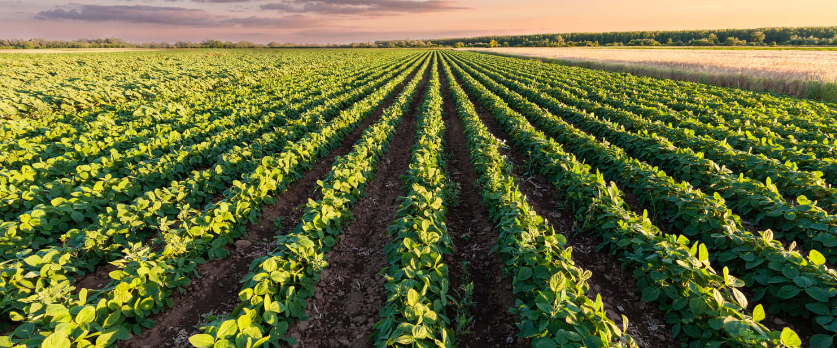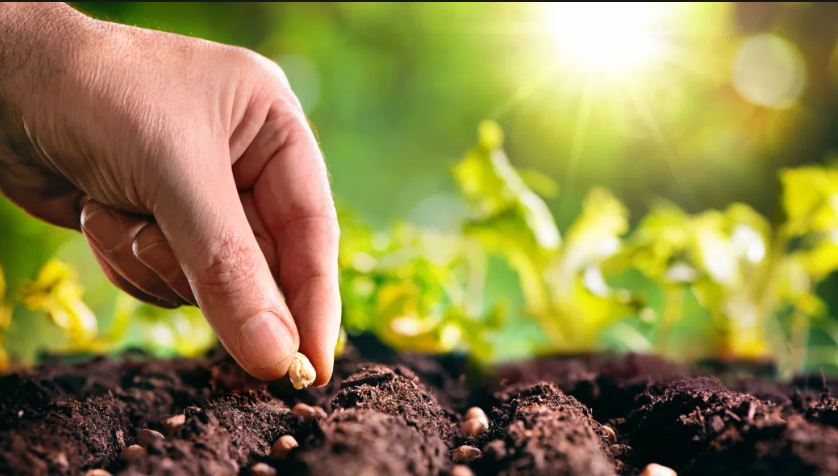In the heart of Europe, a technological revolution is quietly transforming the age-old practice of farming. With a combination of innovation, sustainability, and efficiency, modern farming technologies are reshaping the landscape of agriculture across the continent. From precision farming to smart machinery, Europe is embracing these advancements to ensure food security, increase yields, and mitigate the environmental impact of traditional farming practices. Lets explore Agriculture in Europe.

Precision Farming: Navigating Agriculture with Accuracy
Precision farming has emerged as a game-changer, allowing farmers to manage their fields with unparalleled accuracy. Through the use of satellite imagery, GPS technology, and advanced sensors, farmers can monitor and assess their crops in real time. This granular approach enables them to make informed decisions about irrigation, fertilization, and pest management, thereby reducing waste and optimizing resource utilization.
Vertical Farming: Growing Upward for Sustainability
As arable land becomes scarcer, Europe is turning to vertical farming to maximize space and resource efficiency. These innovative farms cultivate crops in vertically stacked layers, often indoors. By controlling light, temperature, and nutrient levels, vertical farming minimizes water usage and eliminates the need for pesticides. This technology not only ensures a year-round supply of fresh produce but also significantly reduces the carbon footprint associated with traditional farming.
Smart Machinery: The Rise of Agricultural Automation
Automation is on the rise in European agriculture, with smart machinery taking over labor-intensive tasks. Robotic systems equipped with artificial intelligence and machine learning can sow seeds, harvest crops, and even perform selective weeding. These machines operate with precision, reducing the need for human intervention while enhancing productivity. The result is a more efficient farming process that optimizes both time and resources.
IoT and Big Data: Transforming Decision-Making
The Internet of Things (IoT) and big data are driving transformation in European agriculture by providing farmers with real-time insights and predictive analytics. IoT devices collect data on weather conditions, soil moisture, and crop health. This information is then processed to generate actionable recommendations for planting schedules, irrigation, and disease management. Farmers armed with these insights can proactively address challenges and improve overall yields.
Agri-Drones: Taking to the Skies for Crop Management
Drones are soaring above European fields, offering a bird’s-eye view that was once unimaginable. Equipped with high-resolution cameras and multispectral sensors, these agri-drones capture detailed images of crops, detecting signs of stress, nutrient deficiencies, and diseases. This technology enables farmers to target specific areas with interventions, minimizing the use of chemicals and ensuring healthier harvests.
Biotechnology and Genetic Engineering: Enhancing Crop Traits
Biotechnology and genetic engineering are driving advancements in crop development. Through genetic modification, scientists are enhancing crops for traits such as resistance to pests, drought tolerance, and improved nutritional content. These genetically modified organisms (GMOs) offer the potential to increase agricultural productivity while reducing the need for chemical inputs. However, their adoption remains a subject of debate due to concerns over environmental and health impacts.
Sustainable Practices: The Core of Future Agriculture
While embracing technology, Europe is also prioritizing sustainability in its agricultural practices. Agroecology, organic farming, and regenerative agriculture are gaining traction as methods that prioritize soil health, biodiversity, and ecological balance. These approaches promote the use of natural inputs, crop rotation, and cover cropping to maintain resilient ecosystems while producing high-quality food.
Challenges and Considerations
Despite the promising advancements, modern farming technologies also present challenges. The initial costs of adopting these technologies can be prohibitive for small-scale farmers, potentially leading to an uneven distribution of benefits. Additionally, concerns about data privacy, intellectual property rights, and the unintended consequences of genetic engineering warrant careful consideration as technology continues to evolve.
Conclusion
In conclusion, the intersection of technology and agriculture in Europe is reshaping the way we produce food. From precision farming that optimizes resource use to vertical farms that reimagine space utilization, these technologies are increasing productivity and sustainability. As Europe strives to balance innovation with environmental stewardship, the future of farming looks promising with a landscape dotted by smart machines, data-driven decisions, and a commitment to cultivating the land responsibly.









